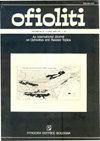Mapping the progressive geologic history at the junction of the Alpine Mountain Belt and the Western Mediterranean Ocean
IF 1.3
4区 地球科学
Q2 GEOLOGY
引用次数: 8
Abstract
This contribution illustrates a new type of map, the “geological event map” (1:250,000 scale), which highlights the progressive steps of the geologic history recorded in the polycyclic orogenic belt of the European Alps, at their southwestern termination facing the western Mediterranean Sea. The formula of historical progression simplifies comprehension of significant phenomenal visions and reorients public curiosity towards geologic processes. This part of the Alpine belt records a geologic history starting with the Variscan convergence during Devonian, throughout the opening of the Tethys Ocean, Alpine convergence, followed by Apennine subduction driving the opening of the Ligurian-Provencal Ocean. Finally, from late Miocene to Present a progressive tectonic inversion characterizes the Ligurian-Provencal continental margin. This geologic history, over a time period of 400 million years, which includes three successive Wilson Cycles, is displayed in 8 plates composed of maps and illustrations. Each map explains the effects of successive tectonic events by adding geologic changes that modify the petrogenetic and structural configurations. The last plate shows the finite state of the geologic history at present-time. The map legend is based on ten major geodynamic events of which rock associations, and their genetic environment, are described in simple divulgation terms, to stimulate interest of neophytes. Illustration of the evolution of rocks and structures side of each map aims at conveying to non specialists in tectonics and petrology the impact of mechanisms associated with the Earth’s deep engine upon surface changes.绘制阿尔卑斯山脉和西地中海交界处的渐进地质历史
这一贡献展示了一种新型的地图,即“地质事件图”(1:250000比例尺),它突出了欧洲阿尔卑斯山多环造山带西南端面向地中海西部的地质历史的渐进步骤。历史进程的公式简化了对重大现象愿景的理解,并将公众的好奇心重新定位于地质过程。阿尔卑斯带的这一部分记录了一段地质历史,从泥盆纪的华力西交汇开始,一直到特提斯洋的打开,阿尔卑斯交汇,然后是亚平宁俯冲,推动了利古里亚-普罗旺斯洋的打开。最后,从中新世晚期到现在,利古里亚-普罗旺斯大陆边缘出现了渐进的构造反转。这段地质历史长达4亿年,包括三个连续的威尔逊旋回,由地图和插图组成的8个板块展示。每张地图都通过添加改变岩石成因和结构配置的地质变化来解释连续构造事件的影响。最后一个板块显示了目前地质历史的有限状态。该地图图例基于十个主要的地球动力学事件,其中岩石组合及其成因环境以简单的方式进行了描述,以激发新手的兴趣。每张地图的岩石和结构进化图旨在向构造和岩石学领域的非专家传达与地球深层引擎相关的机制对表面变化的影响。
本文章由计算机程序翻译,如有差异,请以英文原文为准。
求助全文
约1分钟内获得全文
求助全文
来源期刊

Ofioliti
地学-地质学
CiteScore
2.40
自引率
7.70%
发文量
1
期刊介绍:
Since 1976, Ofioliti provides an international forum for original contributions and reviews in the field of the geodynamics, petrology, geochemistry, biostratigraphy, stratigraphy, tectonics and paleogeography applied to ophiolitic terrains and modern oceanic lithosphere, including their sedimentary cover. Studies of topics such as geodynamics of the mantle, the evolution of orogens including ophiolites and paleoceanography are also welcome
 求助内容:
求助内容: 应助结果提醒方式:
应助结果提醒方式:


